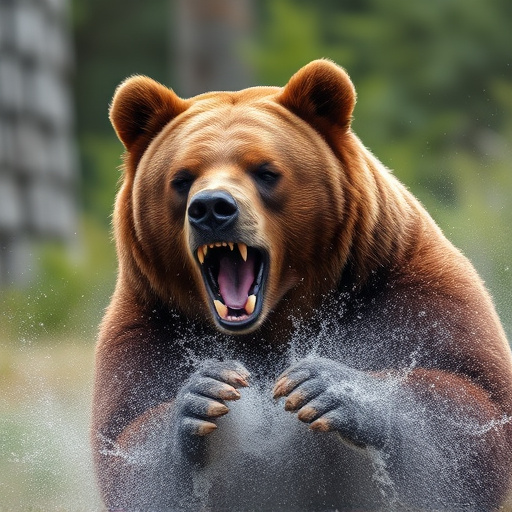Bear spray is highly effective within 25 feet, with a success rate of up to 74%, but drops significantly beyond 100 feet. For optimal protection, directly apply the spray at close range (20-30 feet) to bears' faces and eyes for temporary disability. Success rates vary by bear species, weather, and human behavior; proper usage, including short bursts and loud voices, is crucial. Practicing beforehand enhances real-world effectiveness, especially in grizzly bear encounters where statistics show up to 90% repellency.
“Bear spray, a popular defense mechanism in wild areas, has sparked many debates regarding its effectiveness. This article unravels the truth about bear spray range and offers insights into its success rate through empirical data. We explore common misconceptions, dissecting ‘fact vs fiction’ claims.
In addition, we provide actionable tips to maximize its potential, ensuring safety in grizzly territories. Discover how simple best practices can significantly impact your survival chances, backed by compelling Bear Spray Success Rate Statistics.”
- Understanding Bear Spray Range: Fact vs Fiction
- Demystifying Bear Spray Success Rate Statistics
- Maximizing Bear Spray Effectiveness: Tips and Best Practices
Understanding Bear Spray Range: Fact vs Fiction
Understanding Bear Spray Range: Fact vs Fiction
There’s a common misconception about bear spray that it can be a magical shield, effective from a distance. While bear spray is indeed a powerful deterrent, its range isn’t as vast as some might believe. Studies show that bear spray has a success rate of around 74% within 25 feet (7.6 meters), significantly dropping to approximately 30% beyond 100 feet (30 meters). These statistics underscore the importance of staying close to that 25-foot mark for maximum protection.
The effectiveness of bear spray relies on direct application, not a cloud or mist hanging in the air. When sprayed directly into an attacker’s face, eyes, and respiratory system, it irritates these sensitive areas, temporarily disabling the bear. However, if the spray doesn’t reach these targets, its impact diminishes quickly. Always remember, proper usage at close range is key to ensuring bear spray serves as a reliable deterrent during encounters in wild environments.
Demystifying Bear Spray Success Rate Statistics
Bear spray, a popular defense mechanism for outdoor enthusiasts in bear-inhabited areas, has its effectiveness often measured by success rate statistics. These numbers can be misleading if taken at face value, as they vary greatly depending on the study and context. For instance, some sources claim success rates as high as 90% in deterring bears, while others report much lower figures.
To understand these discrepancies, it’s crucial to consider factors like bear species (grizzly vs. black), distance from the sprayer, weather conditions, and human behavior. Studies show that bear spray is most effective when used correctly—from a close range (around 20-30 feet) and directed towards the face of the bear. Success rates dip significantly with increasing distance, making awareness and quick reaction times vital for its effectiveness as a deterrent.
Maximizing Bear Spray Effectiveness: Tips and Best Practices
Maximizing the effectiveness of bear spray is crucial for those venturing into bear country. It’s important to note that while bear spray is a powerful deterrent, proper usage and understanding its limitations are key. In terms of bear spray success rate statistics, studies show it can be highly effective when used correctly, with success rates reaching up to 90% in repelling grizzly bears.
To maximize its impact, follow best practices: ensure you have the recommended distance (typically 25-30 feet) from the bear before spraying; aim for the bear’s face and eyes; spray in short bursts of 2-3 seconds; and always follow up with a loud, threatening voice. Remember that practice makes perfect, so training and familiarizing yourself with the spray’s operation before your trip can significantly enhance its effectiveness during an encounter.
Bear spray has established itself as a valuable tool for personal safety in bear country, but understanding its effective range and optimal usage is crucial. By separating fact from fiction, we’ve explored the science behind bear spray’s success rate statistics, demonstrating that while it’s not a guarantee, proper application within the recommended 30-foot (10 meter) range can significantly deter aggressive bears. Following best practices, such as carrying backup sprays and staying calm under pressure, will maximize its effectiveness. Remember, knowledge and preparation are key to ensuring your safety in potential bear encounters.
